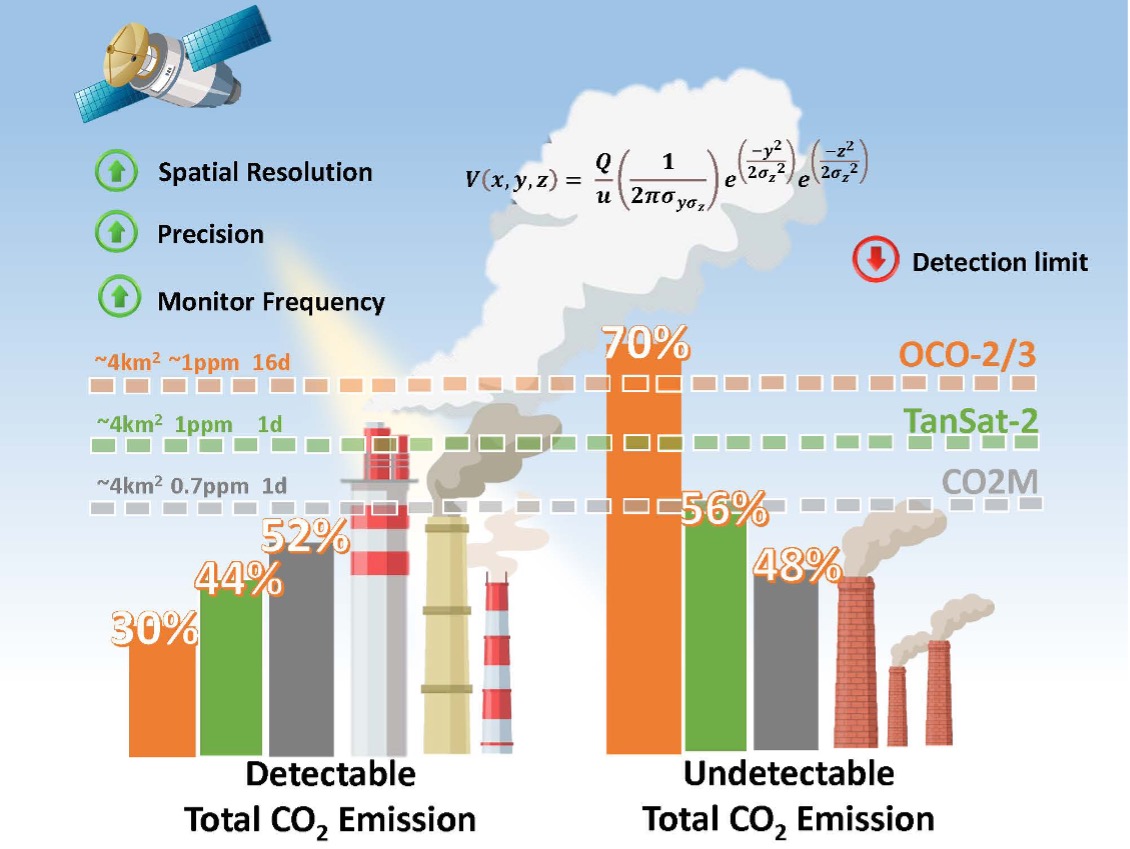
A new study published in the Journal of Remote Sensing has revealed that current satellite systems underestimate total CO₂ emissions from U.S. thermal power plants by 70% (±12%). The research, led by scientists from the Aerospace Information Research Institute of the Chinese Academy of Sciences, highlights important gaps in remote sensing technology, including coarse spatial resolution (1.29×2.25 km² for the Orbiting Carbon Observatory-2 satellite, or OCO-2; 1.6×2.2 km² for OCO-3), limited precision (approximately 1 ppm), and infrequent revisit cycles (every 16 days).
However, this study suggests that next-generation satellites—designed with a resolution of 0.5 km, a precision of at least 0.7 ppm, and daily monitoring capabilities—could reduce errors to below 20%. This advancement would significantly enhance global carbon accountability.
Thermal power generation accounted for 46% of the global increase in CO₂ emissions in 2021, emphasizing its critical role in climate action. While ground-based systems like the U.S. Environmental Protection Agency's Clean Air Markets Program Data (CAMPD) provide precise hourly emissions data, they lack global scalability.
Current satellites, including NASA's OCO-2 and OCO-3, have difficulty detecting smaller facilities, which make up 94% of coal-fired power plants (those under 900 MW) and 97% of gas-fueled plants (those under 600 MW). The study analyzed data from 1,060 U.S. power plants using 2021 satellite data and found that existing systems captured only 29% (±12%) of total emissions, mainly from larger facilities.
Using computational modeling, the researchers demonstrated that improving satellite precision to 0.5 ppm could increase detection rates to 48% of total emissions. By combining 0.5 km spatial resolution, 0.7 ppm precision, and daily overpasses, aggregate errors could be reduced to under 20%. The researchers used Gaussian plume models and high-resolution ERA5-Land meteorological data to account for temporal variability in plant operations and atmospheric interference, thereby refining emission estimates.
The study also assessed upcoming missions like the European Union's Copernicus Anthropogenic CO₂ Monitoring Mission (CO2M), set to launch in 2025 with 0.7 ppm precision, 4 km² resolution, and 5-day revisit intervals, as well as China's TanSat-2, which is designed for 1 ppm precision and daily global coverage. These new systems could detect 52% and 44% of total U.S. power plant emissions, respectively, marking a significant improvement over current capabilities.
Accurate emission inventories are vital for the Paris Agreement's Global Stocktake, which measures progress toward limiting global warming to 1.5°C. "Current satellites provide incomplete data, undermining climate commitments," stated Dr. CHENG Tianhai, the study's corresponding author. "Next-generation systems could fill these gaps, making emissions measurable and actionable."

The image abstract. (Image by AIR)

86-10-68597521 (day)
86-10-68597289 (night)

52 Sanlihe Rd., Xicheng District,
Beijing, China (100864)

